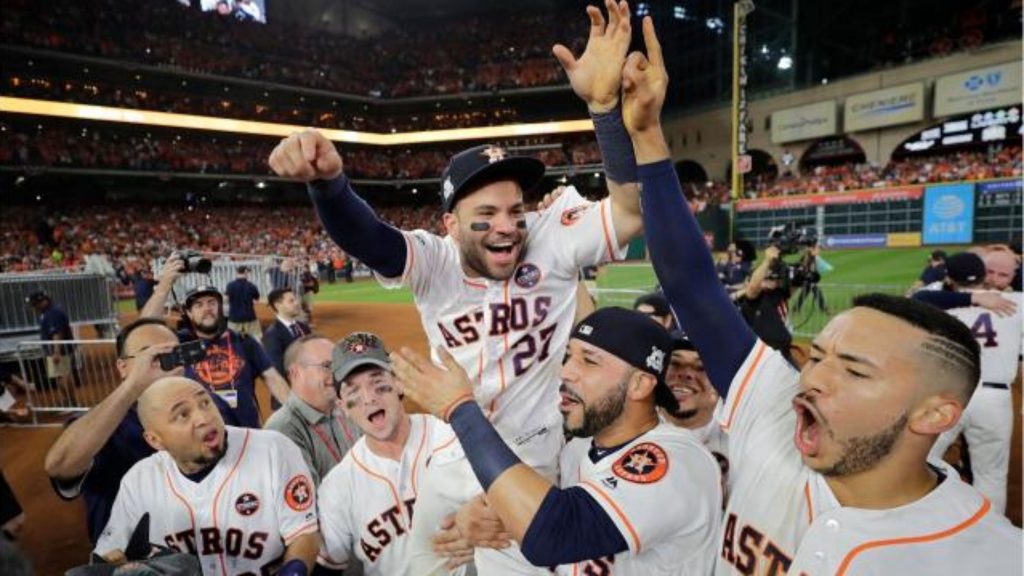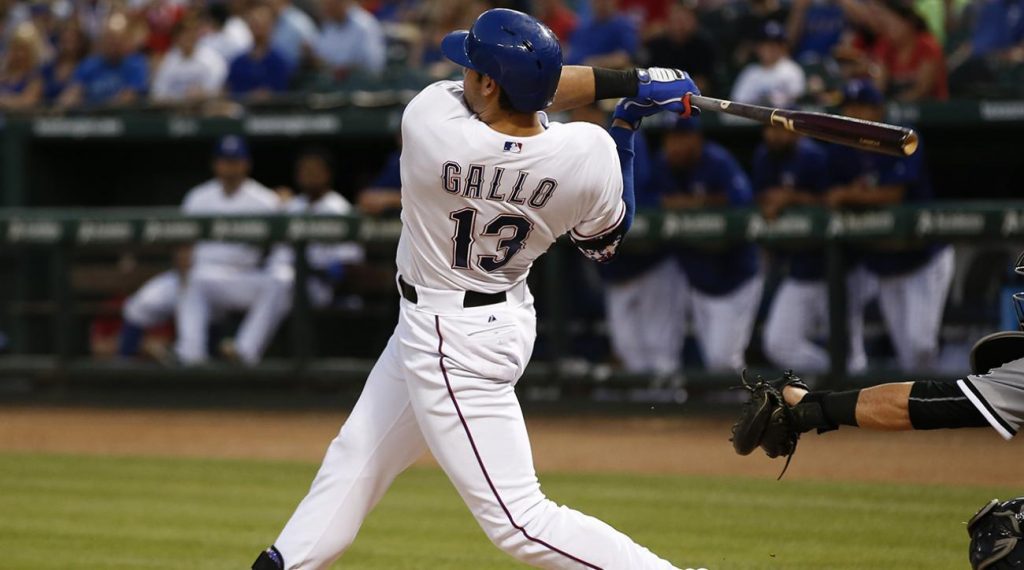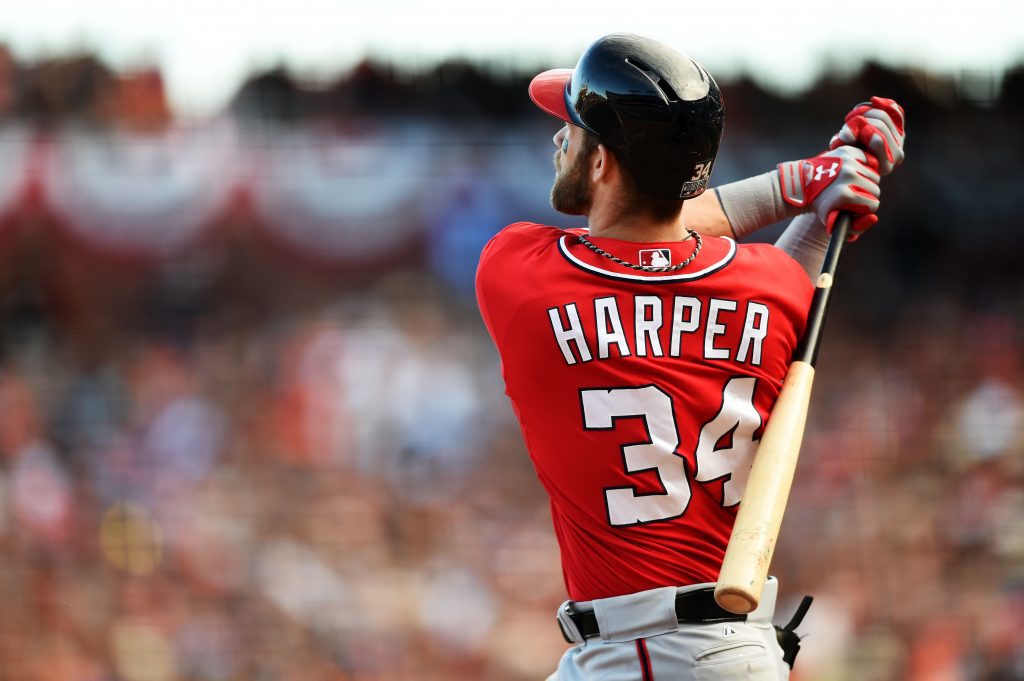MLB Daily Fantasy Strategy Guide (Fanduel & DraftKings)
Introduction:
Although the NFL still dominates the popularity of the DFS community and owns the largest contests in the industry, the MLB can be the most entertaining sport for daily fantasy purposes. Breaking down a single MLB slate can be daunting at times, but with the number of advanced statistics, predicting an outcome is seemingly more comfortable than any other professional sport.
Of course, baseball is a high variance sport with many elemental variables. However, if you are willing to put the time and effort into research and analysis, having a profitable season is very attainable.This article is meant as an introduction to MLB DFS for those who are more than casual players and fans. There is a huge edge to be had and this will peel back the first layer of having a successful season.
This article is meant as an introduction to MLB DFS for those who are more than casual players and fans. There is a huge edge to be had and this will peel back the first layer of having a successful season.
Enjoy!
FanDuel vs. DraftKings
Each major DFS site has their own way of entertaining customers. Deciding which site is most comfortable for you is where we start. It is important to give each platform an honest try and then make an informed decision from there.

Traditionally speaking, FanDuel has incurred the reputation of having softer pricing on players and being a more user-friendly site. It has attracted less veteran DFS players because of the high scoring totals and easier roster construction.
When it comes to building a lineup, FanDuel has adjusted which positions need to be rostered from last year. Now, there is no need to select a catcher. Instead, a C/1B spot is available. Additionally, there is a UTL position. Again, easier for newcomers.
Conversely, DraftKings is more of a sharper crowd with seasoned players and more strict pricing on players. The algorithm DK uses will affect a player’s price based on recent performance, ballpark, and opposing pitcher. This usually results in a daily price change. FanDuel can be a little slower in adjusting the price. This is the historical consensus anyways.
On DraftKings, there haven’t been any changes from last year. The big difference from FanDuel is that you need to roster two starting pitchers, which creates a different approach when building lineups. More strategy involved.
Last, the fantasy scoring difference.
Love our content? Check out the GoingFor2 Live Podcast Network!
The scoring system on FanDuel is designed to ensure you secure a top pitcher. With the addition of a four-point bonus for a quality start plus six points for a win. The average lineup score with a pitcher $10,000 or higher was 124.19 vs. 115.47 with lineups rostering pitchers under $10,000.
On DraftKings there are negative points incurred by pitchers who allow hits and BB’s in addition to runs. There are also bonus points for Complete Games and No Hitters.
Take the first couple of weeks to find out which site you feel more comfortable with and go from there. There is no wrong answer but understanding which site you can be more successful on is something undervalued in the industry.
Are You a Cash Game or GPP Player?
The second question you need to ask yourself is what kind of DFS player are you? In cash games, you really only need to beat 50% of the field. In GPP’s, the top 20% generally will cash, but you are really looking to finish first for that big payday. GPP’s are certainly more fun but can be extremely disappointing with the higher probability of draining your account balance.
Again, there is no wrong answer, but having consistency will allow you to comfortably play without being discouraged. Cashing in 55-60% of double ups, 50/50’s and head-to-heads is a great goal to build a stable bank-roll foundation.
Playing big GPP’s and chasing qualifiers (a whole other conversation) are much more risk-oriented and losing weeks at a time is very common. However, winning one tournament can pay for an entire season of DFS.
Keep in mind, whichever path you choose to take, will warrant a different lineup construction strategy. Cash games require high-floor fantasy producing players, such as a Joey Votto. Whereas GPP’s consist of high-ceiling, low-owned players, like a Joey Gallo.
Understanding the Acronyms
There is a lot of MLB DFS content out there from different analysists. More often than not, these experts recommend similar players. For the most part, there are a few steps to analyze any given slate:
1) Vegas line total.
2) Batting lineup vs. opposing starting pitcher.
3) Value players.
Then you construct your DFS lineup.
What is missed from the general casual players is the advanced analytics side of things. With so many great statistics available, diving deep to understand specific stats becomes a great tool for increasing your winning potential. Here are some of the best stats to use:
wOBA (Weighted On Base Average) – attempts to credit a hitter for the value of each outcome (single, double, etc.) rather than treating all hits or times on base equally.
https://www.fangraphs.com/library/offense/woba/
ISO (Isolated Power) – a statistic which communicates a hitter’s extra bases per at-bat.
https://www.fangraphs.com/library/offense/woba/
wRC+ (Weighted Runs Created Plus) – attempts to credit a hitter for the value of each outcome (single, double, etc.) rather than treating all hits or times on base equally, while also controlling for park effects and the current run environment.
https://www.fangraphs.com/library/offense/wrc/
SIERA (Skill-Interactive Earned Run Average) – Skill-Interactive ERA (SIERA) is the newest in a long line of ERA estimators. Like it’s
predecessors FIP and xFIP, SIERA attempts to answer the question: what is the underlying skill level of this pitcher?
https://www.fangraphs.com/library/pitching/siera/
HR/FB (Home Run to Fly Ball rate) – the ratio of how many home runs are hit against a pitcher for every fly ball they allow.
https://www.fangraphs.com/library/pitching/hrs/
Plate Discipline Statistics – statistics tell us how often a hitter swings and makes contact with certain kinds of pitches or how often a pitcher induces swings or contact on certain kinds of pitches.
O-Swing % = Swings at pitches outside the zone / pitches outside the zone
Z-Swing % = Swings at pitches inside the zone / pitches inside the zone
Swing % = Swings / Pitches
O-Contact % = Pitches on which contact was made on pitches outside the zone / Swings on pitches outside the zone
Z-Contact % = Pitches on which contact was made on pitches inside the zone / Swings on pitches inside the zone.
Contact % = Pitches on which contact was made /Swings
Zone % = Pitches inside the strike zone / Total Pitches
F-Strike % = First-pitch strikes / Plate appearances
SwStr % = Swing and misses / Total Pitches
Charting these advanced metrics can shed light on finding players in optimal spots rather than seemingly obvious picks. This can help find that diamond in the rough to shoot you up a leaderboard.
Lineup Construction
Pay up for pitching. There can be a case made to fade high-owned pitchers in large, multi-entry GPP’s. In most scenarios though (cash games, single entry tournaments, ect.), you need to have the mentality of paying up for the safest pitching option. Your starting pitcher will have the best opportunity to score the most points on any given night. Similar to selecting the top QB option or the top goalie in NHL, your pitcher should be the anchor of your team with the highest floor for fantasy production. Securing those bonus points for a win is imperative because the rest of the field will leapfrog you if you fail to get these important points.
Of course, there will be scenarios where certain pitchers are priced at a discount in great match-ups which is fine. The theory behind paying up for pitching is that the best hitter on the board has a much higher probability of going 0-4 with 0 fantasy points than the best pitcher getting tagged for four runs in the first inning and getting yanked.
Select hitters on teams who have the most successful offensive matchups. OK, that seems pretty obvious. The point is that you are looking at a group of hitters on teams who are in good spots as opposed to singling out individual hitters on any given night.
This leads to the importance of stacking. In cash games, “mini-stacking” is a very popular strategy, for good reason. What we mean by a mini-stack is selecting a couple of hitters who hit next to each other in a batting lineup. Why this works is because you can double dip on fantasy production from just one hit.
Example: Let’s say you roster Trea Turner and Bryce Harper. If Turner gets on base, you get your point for a hit/BB. Next, Bryce comes up to the plate and hits a home run. Not only will you get the home run and RBI points from Harper, but you will also get the run point from Turner. You are investing in one outcome as opposed to trying to find similar production across the entire slate.
In GPP’s, a full stack strategy is very “boom or bust”, which is what you are looking for when you are trying to come first out of thousands of other entries. Selecting four or five hitters in one lineup hoping for a blowout game will allow your lineup to multiply in points from all hitting categories.
Ownership is another piece to consider when constructing a lineup. There are a lot of ownership projection models and tools which can help you determine which players will be popular on any slate, but common sense should steer you in the right direction. If there is a terrible fly-ball pitcher on the mound in Colorado, you should probably understand the hitters will be popular. Everyone knows that.
Looking at the Vegas lines will also show which games are projected for the most runs. This will correlate to where the ownership will trend.
Ownership has been a conversation in the industry which carries a lot of weight. In cash games, ownership should not be considered. Only when you are playing in large MME (Mega Multi-Entry, usually 150 lineups) tournaments do you really want to consider fading and pivoting off the chalk. At this point, leverage becomes your best friend.
Here is an example of when to use a leverage strategy in a large field GPP:
Let’s say Stephen Strasburg is on the mound against the Atlanta Braves. The general consensus would be to roster the fire-balling hurler against a weak Braves team. You feel Strasburg will be around 20% owned. A leveraged play would be to take some Atlanta Braves hitters. Like Freddie Freeman who owns a 4/13/.375/1.213 slash line in 40 AB’s against Strasburg. If Freeman hits a homerun against Strasburg at low ownership, not only will you pass all of the other lineups without Freeman, but that 20% who own Strasburg will also take negative points against.
Punting is another strategy which is much more viable in MLB, opposed to other sports. In the NBA, we are only really looking at punt options who are in line for a lot of minutes.
Regardless of price, a cheap hitter will generally get the same opportunity to produce as any other bat in the lineup. If paying down for one player allows you to pay up for a pitcher or another hitter in an amazing spot, do not shy away. Worst case scenario, he doesn’t record a hit and will give you a zero. Well, every single batter has that exact same potential.
Summary
Breaking down the strategy to play MLB in DFS could be hundreds of pages long. There are so many different ways to analyze this sport and construct specific lineups. What makes baseball so unique is that we can break down an outcome of one pitcher going up against one hitter. We aren’t trying to predict what an NFL coach will try to do against a stout defensive team. Pound the rock, or air it out? Or the probability of an NBA coach deciding to sit his star player five minutes before roster lock… I know many us have been burned on this.
We can break down which hitters are better against left-handed pitchers. Or which batters struggle with breaking balls. Which ballpark induces more home runs. Which pitchers are more vulnerable to giving up a stolen base. On and on we can go to identify the best possible outcome in a DFS slate.
Hopefully, this article will help you understand the process involved to construct a cashing lineup as often as possible. The more time and effort put in will reward you. Stay tuned for daily picks and plays throughout the season, to help steer you in the right direction.
Good luck this season!
ATTN Dynasty Commissioners: Do you want to do something cool for your league? How about a 1-hour live show dedicated to YOUR league? Team-by-team breakdowns, rankings, and more. For details and to book a show, visit: GoingFor2.com/plp.



 Transform an NFL Team’s Offense?
Transform an NFL Team’s Offense? 






